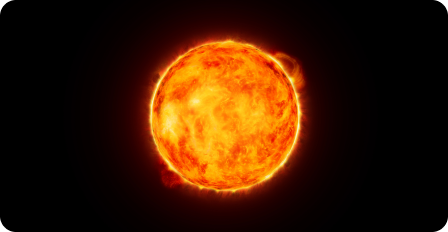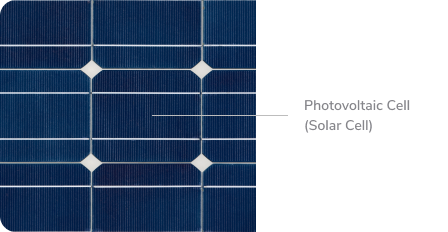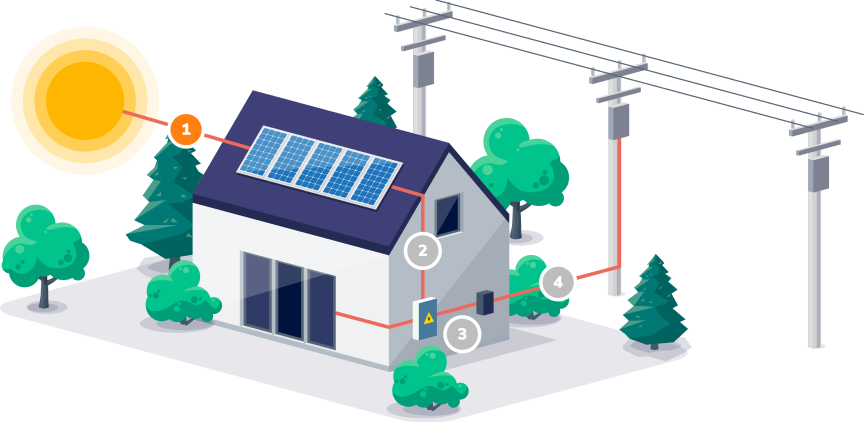Solar technology is an advanced way to create electricity that powers anything requiring electrical power to function. The science behind how this works can be pretty complicated and difficult to understand.
It’s not necessary to be a solar expert before you inquire about solar panels for your home. But it is important you understand the basics, so here is a simplified step-by-step process showing how solar works for your home.
Our goal at the end of this article is to turn you into just enough of a solar panel expert so that you feel confident in asking all the right questions when it comes to installing solar panels in your own home.
How Does Solar Energy Work?

Before diving into the nitty-gritty details of how solar panels work, let’s take a step back and explain how solar energy works. Simply put, solar energy is any kind of energy created by the Sun. But to be more exact, what we commonly refer to as solar energy, is actually electromagnetic radiation, which comes from the sun’s rays.
Where Does Solar Energy Come From?

1. Nuclear fusion occurs in the sun’s core, which releases energy in the form of photons.

2. Photons travel from the Sun to the Earth in electromagnetic waves, also known as electromagnetic radiation, or sun rays.
The Photovoltaic (PV) Effect
There are several different ways we can harness solar energy to turn it into electricity, but the most common method used is called the photovoltaic effect.

Your solar panels are made up of photovoltaic cells, also known as solar cells. When the sun’s rays hit your solar panels they activate the solar cells inside your solar panels, which create an electric current. This process is known as the photovoltaic effect and explains how solar technologies work.
How Do Solar Panels Work in Your Home?
Types of Solar Panels
Although there are many different types of solar panels, the most commonly used for homes are monocrystalline solar panels. There are also polycrystalline solar panels and thin film solar panels. Below are the differences between each type of solar panel.
Monocrystalline
Monocrystalline panels get their name from the composition of its solar cells, which are made up of single silicon crystal. Because manufacturers have to create a single silicon crystal, these panels are more expensive. However, they also last longer and are more efficient than polycrystalline or thin film solar panels.
Polycrystalline
Polycrystalline solar panels are the middle ground between efficiency, durability, and cost when compared to other types of solar panels. They are made of silicon fragments rather than a single silicon crystal, which makes them less expensive to manufacture. Polycrystalline panels are a bit less effective than monocrystalline.
Thin-Film
Thin-film solar panels are the cheapest option when it comes to solar panels. These are typically not recommended for your roof as they are not durable and are significantly less effective than monocrystalline or polycrystalline panels. Thin-film panels are extremely lightweight and are ideal for portable devices such as calculators and RV setups.
Solar Panel Efficiency

Now that you know how solar panels work, it’s worth noting that different types of solar panels have different levels of efficiency. Solar panel efficiency refers to the amount of electricity the panels are able to create based on the sunlight they absorb. Most home solar panels have an efficiency rating of 15 to 22%. Learn more about solar panel efficiency and how this affects your energy bill.
To see if your home qualifies for solar panels, take our quick quiz and answer a few questions about your home and energy consumption.
